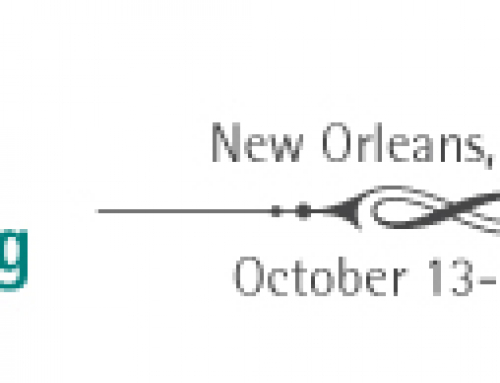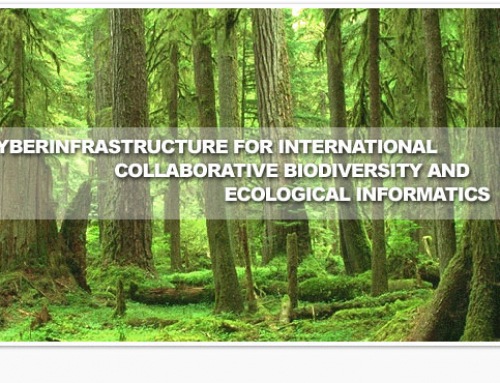Florida LambdaRail Joins Forces with CiscoWave and UltraLight/PLaNetS to enable the AtlanticWave and Brazil’s CMS Tier2 facilities to participate in Supercomputing Conference (SC08) – Austin, Texas, November 18, 2008
November 18, 2008, Austin, TX – Florida LambdaRail (FLR) joined forces with CiscoWave (C-Wave), UltraLight/PLaNetS and AtlanticWave (A- Wave) for the Super Computing 2008 event to enable Brazil’s CMS distributed Tier2 facility to participate in the bandwidth challenge competition. The CiscoWave made it possible for A-Wave and its connectors from Brazil – the Academic Network of São Paulo (ANSP), the national research and education network of Brazil (RNP), the SouthernLight GOLE in São Paulo and the Tier2 facilities in São Paulo (SPRACE) and the Tier2 facility in Rio de Janeiro (HEPGRID) – to access the Super Computing 2008 (SC08) venue in Austin, Texas.
CiscoWave is a project developed in partnership with National LambdaRail (NLR), its regional members, Cisco and the broader R&E community. The project helps to promote and enable collaborative projects within the R&E community, including experimental networking research, development, and testing of innovative network services, and early deployment of advanced applications.
A-Wave interconnected with the C-Wave in Jacksonville, Florida, through a 10 Gigabit lambda from Miami to Jacksonville over FLR’s optical backbone combined with a temporary 10 Gigabit Ethernet connection on the UltraLight/PLaNetS project switch of the California Institute of Technology (Caltech). C-Wave provided a layer2 service from Jacksonville to Austin, Texas by which A-Wave accessed the SC08 show floor, and then extended the layer2 services to Brazil, using the WHREN-LILA project international research network connection link, which is connected to the Brazilian research networks ANSP and RNP through the SouthernLight GOLE in São Paulo.
Brazil has emerged as a significant member of the Compact Muon Solenoid (CMS) high-energy physics experiment at CERN – the European Organization for Nuclear Research. Key resources that have contributed to this achievement have been the Western Hemisphere Research and Education Networks – Links Interconnecting Latin America (WHREN-LILA) and the A-Wave projects. WHREN-LILA and A-Wave, for the past four years, have been enhancing U.S-Latin American science collaborations for the CMS Tier2s of Brazil, and in general for the science research and education collaborations between the U.S. and Latin America, through a high-performance communications network connection between Miami, Florida and São Paulo, Brazil.
AMPATH, in Miami, Florida, an A-Wave exchange point and the international exchange point connecting the U.S. to Latin America, is collaborating with Cisco and FLR to establish a more permanent connection to the C-Wave at AMPATH, around the January 2009 timeframe. The C-Wave program is aiming to enhance network research and enable prototype application experimentation activities between the U.S. and the emerging NRENs of Latin America. Domain researchers in Latin America will be able to access research universities and laboratories in the US, events like SuperComputing, and eventually will be able to access labs within Cisco to participate in network-enabled collaborative scientific research and education.
About AMPATH: Florida International University’s Center for Internet Augmented Research and Assessment (CIARA) has developed an international, high-performance research connection point in Miami, Florida, called AMPATH (AMericasPATH; www.ampath.fiu.edu). AMPATH extends participation to underrepresented groups in Latin America and the Caribbean, in science and engineering research and education through the use of high-performance network connections. AMPATH is home to the WHREN-LILA high-performance network link connecting Latin America to the U.S., funded by the National Science Foundation (NSF), award #0441095 and the Academic Network of Sao Paulo (award #2003/13708-0).
About AtlanticWave: AtlanticWave provides research and education network exchange and peering services for multiple advanced networks that interconnect at key exchange points along the Atlantic Coast of North and South America. AtlanticWave was proposed as an integral component of the successful Western-Hemisphere Research and Education Networks – Links Interconnecting Latin America (WHREN-LILA) proposal submitted to the National Science Foundation International Research Network Connections (IRNC) program by Florida International University (FIU). AtlanticWave is collaboration between the Southeastern Universities Research Association (SURA), FIU-AMPATH, Florida LambdaRail, Southern Crossroads (SoX)/Southern Light Rail (SLR), Mid- Atlantic Crossroads (MAX), and Internet2/MANLAN.
About Caltech: With an outstanding faculty, including five Nobel laureates, and such off-campus facilities as the Jet Propulsion Laboratory, Palomar Observatory, and the W. M. Keck Observatory, the California Institute of Technology is one of the world’s major research centers. The Institute also conducts instruction in science and engineering for a student body of approximately 900 undergraduates and 1,300 graduate students who maintain a high level of scholarship and intellectual achievement. Caltech’s 124-acre campus is situated in Pasadena, California, a city of 135,000 at the foot of the San Gabriel Mountains, approximately 30 miles inland from the Pacific Ocean and 10 miles northeast of the Los Angeles Civic Center. Caltech is an independent, privately supported university, and is not affiliated with either the University of California system or the California State Polytechnic universities. http://www.caltech.edu
About Florida International University: FIU, Miami’s public research university, educates 38,000 students on campuses throughout South Florida and Latin America, has 1,000+ full-time faculty and 130,000 alumni. FIU is one of the 25 largest universities in the nation, based on enrollment. FIU is the youngest university to have been awarded a chapter of Phi Beta Kappa, the nation’s oldest and most distinguished academic honor society. FIU delivers high-quality education and training, conducts and promotes research to enhance Florida’s role as a leader in telecommunications and information technology, offers training necessary to fostering business development and workforce preparedness and promotes technology transfer to enhance enabling technologies for the telecommunications and information technology industries. More information about FIU can be found at www.fiu.edu
About Florida LambdaRail: Florida LambdaRail LLC (FLR) is a Florida limited liability company formed by member higher education institutions to advance optical research and education networking within Florida. Florida LambdaRail is a high-bandwidth optical network that links Florida’s research institutions and provides a next- generation network in support of large-scale research, education outreach, public/private partnerships, and information technology infrastructure essential to Florida’s economic development. For more information: http://www.flrnet.org
About National LambdaRail: National LambdaRail (NLR) is a major initiative of U.S. research universities and private sector technology companies to provide a national scale infrastructure for research and experimentation in networking technologies and applications. NLR puts the control, the power, and the promise of experimental network infrastructure in the hands of the nation’s scientists and researchers. Visit http://www.nlr.net for more information.
About WHREN-LILA: The Western-Hemisphere Research and Education Networks – Links Interconnecting Latin America (WHREN-LILA) increases the rate of discovery and enhances science research and education across the Americas through the creation of a distributed exchange infrastructure to provide a hybrid of network services to support discipline-specific and general-purpose high-performance distributed- computing and networking services over wide geographical distances. WHREN-LILA is funded by the U.S. National Science Foundation, award #OCI-0441095, and is supported through the Academic Network of Sao Paulo, project #04/14414-2.
About the Academic Network of Sao Paulo (ANSP): ANSP unites São Paulo’s University networks with Scientific and Technological Research Centers in São Paulo, and is managed by the State of São Paulo Research Foundation (FAPESP). The ANSP Network is another example of international collaboration and exploration. Through its connection to WHREN-LILA, all of the institutions connected to ANSP will be involved in research with U.S. universities and research centers, offering significant contributions and the potential to develop new applications and services. This connectivity with WHREN-LILA and ANSP will allow researchers to enhance the quality of current data, inevitably increasing the quality of new scientific developments. http://www.ansp.br
About RNP: RNP, the National Education and Research Network of Brazil, is a not-for-profit company that promotes the innovative use of advanced networking, with the joint support of the Ministry of Science and Technology and the Ministry of Education. In the early 1990s, RNP was responsible for the introduction and adoption of Internet technology in Brazil. Today, RNP operates a nationally deployed multi- gigabit network used for collaboration and communication in research and education throughout the country, reaching all 26 states and the Federal District, and provides both commodity and advanced research Internet connectivity to more than 300 universities, research centers, and technical schools. http://www.rnp.br
About SouthernLight (SoL): SouthernLight is the GOLE (GLIF Open Lightpath Exchange) in São Paulo, Brazil, fruit of collaboration between ANSP and RNP, and is responsible for providing end to end circuits between Brazilian scientific institutions and their international collaborators. Currently, international connectivity of SouthernLight is provided by the WHREN-LILA link to the GOLE located at AMPATH. See http://wiki.glif.is/index.php/SouthernLight.
About UNESP (São Paulo): Created in 1976 with the administrative union of several isolated Institutes of higher education in the State of São Paulo, the São Paulo State University, UNESP, has 39 institutes in 23 different cities in the State of São Paulo. The university has 33,500 undergraduate students in 168 different courses and almost 13,000 graduate students. Since 1999 the university has had a group participating in the DZero Collaboration of Fermilab, which is operating the São Paulo Regional Analysis Center (SPRACE). This group is now a member of CMS Collaboration of CERN. See http://www.unesp.br.
About UERJ (Rio de Janeiro): Founded in 1950, the Rio de Janeiro State University (UERJ; www.uerj.br) ranks among the ten largest universities in Brazil, with more than 23,000 students. UERJ’s five campuses are home to 22 libraries, 412 classrooms, 50 lecture halls and auditoriums, and 205 laboratories. UERJ is responsible for important public welfare and health projects through its centers of medical excellence, the Pedro Ernesto University Hospital (HUPE) and the Piquet Carneiro Day-care Policlinic Centre, and it is committed to the preservation of the environment. The UERJ High Energy Physics group includes 15 faculty, postdoctoral, and visiting Ph.D. physicists and 12 Ph.D. and master’s students, working on experiments at Fermilab (D0) and CERN (CMS). The group has constructed a Tier2 center to enable it to take part in the Grid-based data analysis planned for the LHC, and has originated the concept of a Brazilian “HEP Grid,” working in cooperation with USP and several other universities in Rio and São Paulo.
Media Contact:
Omaida Hennessey
Florida International University
hennesse@fiu.edu





